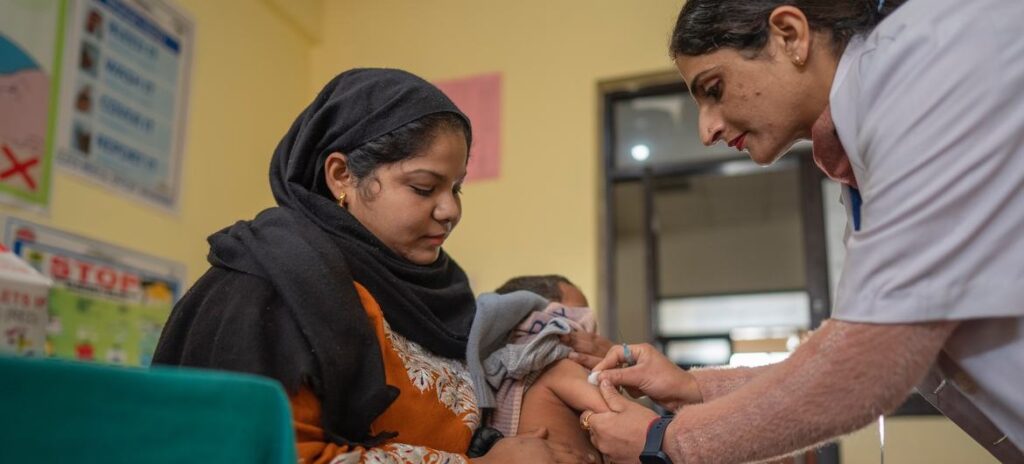
That is according to the world health organization (WHO) and the UN Children’s Fund (UNICEF) snapshot of trends in vaccinations against 14 diseases – all of which underscores the need for continued catch-up, recovery and system-strengthening efforts.
“The The latest trends show that many countries are still missing far too many children,” said UNICEF Executive Director Catherine Russell. “Closing the immunization gap requires a global effort, with governments, partners and local leaders investing in primary health care and community workers to ensure every child is immunized and that overall health systems are strengthened.”
The number of children who received three doses of the diphtheria, tetanus and pertussis (DTP) vaccine in 2023 – a key indicator of global immunization coverage – remained stuck at 84 percent (108 million).
To go backwards
However, those who have not received any dose of the vaccine increased from 13.9 million in 2022 to 14.5 million in 2023.
More than half of unvaccinated children live in 31 countries with fragile, conflict-affected environments, where children are particularly vulnerable to preventable diseases due to disruptions and lack of access to safety, nutrition and health care, the agencies said.
Additionally, 6.5 million children did not complete their third dose of the DTP vaccine, which is necessary to achieve protection against diseases in infancy and early childhood.
These trends, which show that global vaccination coverage has remained largely unchanged since 2022 and – more worryingly – has still not returned to 2019 levels, reflect ongoing challenges with service disruptions, logistical challenges, vaccine hesitancy and inequalities in access to jabs.
Emerging measles outbreaks
The data also shows that vaccination rates against the deadly measles disease have stagnated, leaving nearly 35 million children inadequately protected.
In 2023, only 83 percent of children globally received the first dose of the measles vaccine through routine health care, while the number of children receiving the second dose increased slightly from the previous year, reaching 74% of children.
These figures fall short of the 95 percent coverage needed to prevent outbreaks, avoid unnecessary illness and death, and achieve measles elimination targets.
In the past five years, measles outbreaks affected 103 countries, home to about three-quarters of the world’s infants. Low vaccination coverage (80% or less) was a major factor. In contrast, 91 countries with high measles vaccination coverage did not have outbreaks.
Canary in the mine
“Measles outbreaks are the canary in the coal mine, exposing and exploiting vaccine shortcomings and hit the most vulnerable first,” said Dr Tedros Adhanom Ghebreyesus, Director-General of WHO.
“This is a solvable problem. The measles vaccine is cheap and can be delivered even in the most difficult places. WHO is committed to working with all its partners to support countries to close these gaps and protect the children most at risk as quickly as possible.”
Good news about global HPV vaccination coverage
The new data also show some positive aspects regarding the vaccination rate.
The steady introduction of a number of newer vaccines, including those against human papillomavirus (HPV), meningitis, pneumococcal, polio and rotavirus, means protection continues to increase, particularly in the 57 countries supported by Gavi, the Vaccine Alliance.
For example, the proportion of adolescent girls worldwide who have received at least one dose of the HPV vaccine, which protects against cervical cancer, has increased from 20% in 2022 to 27% in 2023.
“The HPV vaccine is one of the most impactful vaccines in Gavi’s portfolio, and it’s incredibly heartwarming that it’s now reaching more girls than ever before“, said Dr. Sania Nishtar, CEO of Gavi.
However, the HPV vaccine coverage rate is well below the target of 90 percent. eliminate cervical cancer as a public health problem, affecting only 56 percent of adolescent girls in high-income countries and 23 percent in low- and middle-income countries.

